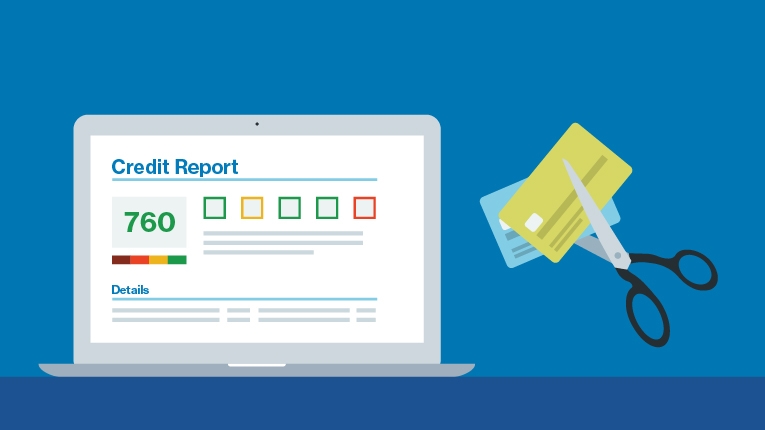How to take out a personal loan [6 steps]

To take out a personal loan, start by determining how much you need to borrow and calculating whether it fits within your budget. Before applying for a loan, research and compare various lenders to find the best interest rates and terms for your needs. Once you've chosen a lender that offers the best deal, submit your application.
Whether you need to fill gaps in your budget, cover a large expense, or pay down high-interest debt at a lower cost, understanding how to take out a personal loan is the first step to securing the funds you need to cover temporary, short-term expenses.
The steps for taking out a personal loan are similar, no matter which lender you choose. Here's how to take out a loan in 6 simple steps:
How to take out a personal loan in 6 steps
Determine how much you need to borrow
Check your credit score
Shop around and compare lender options
Check your interest rate
Choose a lender and apply
Accept the loan
1. Determine how much you need to borrow.
Before you take out a loan, know how much you need and how much you can afford to repay monthly. Borrow only what’s needed to cover your goal, like paying off credit card debt, covering an emergency expense, or making home improvements. And remember: lenders will consider basic information, including your income when providing repayment terms, but it’s up to you to conduct a thorough review of your financial picture.
Before applying for a personal loan, decide what payment will fit your budget. Consider your monthly expenses and all of your potential sources of extra income. That way, you can compare loan offers based on what you know you can afford.
2. Check your credit score.
Lenders are more likely to approve loans to borrowers with high credit scores and may offer borrowers more favorable terms—like lower interest rates. Review your credit report and run a credit check before you try to take out a loan. You can get one free credit report per year from each of the three credit bureaus: Equifax, TransUnion, and Experian. Make sure to check for any inaccuracies in your report.
If you find any, report them immediately to one of the credit bureaus. If your credit score is in the lower range, consider taking steps to improve your score before applying for a personal loan. Low credit scores can lead to higher interest rates or prevent you from qualifying, so it's in your best interest to do what you can to make improvements before applying for a loan or borrowing money.
Here are some ways to boost your credit before applying for a personal loan:
Pay off credit card balances.
Catch up on overdue payments.
Avoid new credit applications unless necessary.
Dispute any incorrect info on your credit report with Experian, TransUnion, or Equifax.
3. Shop around and compare lender options.
There are more options than ever for personal loans. You can borrow from a brick-and-mortar bank, credit union, or online lender. The best personal loan for you will depend on your finances and the amount and purpose of the loan. When comparing lenders, make sure to compare APRs—the total cost of your loan, including interest fees—and try to find a lender that doesn’t charge prepayment penalties or hidden fees. But make sure to look at the whole package.
Though interest rates, costs, and repayment terms are a big part of the decision, take the time to read reviews and other customer experiences before committing. A company with excellent customer service could help you navigate the process and make your personal loan experience stress-free.
4. Check your interest rate.
When you submit a loan application for a personal loan (or any credit card account), your credit score might take a hit. That’s because a personal loan application—like applying for a new credit card—triggers a hard inquiry on your credit report.
Inquiries aren’t necessarily bad, but having too many might look like a red flag. Luckily, many online lenders, like LendingClub Bank, let you check your loan rate and review your potential loan offers before applying without impacting your credit score.
5. Choose a lender and apply.
Once you’ve found a lender that works for your personal finances, complete an application. You may be asked to provide proof of income—like pay stubs, business records, or tax documents—and proof of residence. The steps can vary a bit by lender, but you'll usually need to give the following details:
Name
Date of birth
Social Security number
Physical address
Contact info
Desired loan amount, term, and loan purpose
Employment and income info
Housing status and monthly payment
Driver's license or other government-issued photo ID
If you are declined for a personal loan for some reason, try not to worry. You’re not alone, and there is a path forward. Taking steps to improve your personal loan eligibility can set you up for success the next time you apply.
6. Accept the loan.
Your lender may send a check for the loan amount or make a direct deposit to your bank account. In the case of a balance transfer loan, they may pay your creditors directly.
Reasons to take out a personal loan
A personal loan is an unsecured loan that can be used for almost anything. A personal loan can help you get the money you need without breaking the bank. Here are four of the most common reasons you might take out a personal loan.
You need to pay for a large purchase, project, or event.
If you need to make a significant purchase―like replacing an aging furnace, deck, or roof―the interest rate on a personal loan might be better than the annual percentage rate (APR) on your credit card or in-store financing options. If you take out a loan and pay the seller in cash, you may be better off in the long run.
You want to consolidate credit card debt.
Debt consolidation is a way to combine multiple debt accounts so you can pay the total down faster and save money on interest rates. If you’re struggling to pay off debt, in many cases, you can qualify for a lower interest rate and a monthly payment that’s more in line with your budget. LendingClub Bank, for example, offers balance transfer loans and joint applications to help members save money and get the lowest possible rates. Over 5 million LendingClub members have used a personal loan to pay down their high-interest debt.
You have unexpected medical or emergency expenses.
Rather than charging unexpected costs to a high-interest credit card, a personal loan can get you the money you need without the stress of credit card debt. A personal loan not only gives you the time you may need to pay the money back, but it can also save you money on interest compared to a credit card. When deciding between the two, compare APRs to determine the best rate.
You want to improve your credit score.
A personal loan may help improve your credit score—especially if your current credit report shows credit card debt as your primary type of credit. A personal loan can help diversify your account mix and may lower your credit utilization ratio, which are important factors in determining your score. Plus, making on-time payments can help boost your payment history.
Taking out a personal loan FAQ
These are some of the most commonly asked questions about how to take out a personal loan.
Is it a good idea to take out a personal loan?
It depends on your current financial situation and what you need. Most personal loans are unsecured, meaning they don’t require collateral. That means if you have a high credit score, steady income, good credit history, and low debt-to-income ratio, a personal loan could be a more cost-effective solution for funding a large or unexpected expense. However, secured loans—like a mortgage or auto loan—might be the better option if you're trying to purchase a home or car. Before you apply, make sure you meet the personal loan eligibility criteria.
How to take out a small personal loan?
A small personal loan may help cover a temporary spike in monthly expenses or an unanticipated financial burden. Generally, at most $3,000, a small personal loan can be a great way to borrow exactly what you need without relying on credit cards.
Because they are typically less profitable than larger loan amounts, mortgages, or auto loans, some major banks won’t offer small personal loans. LendingClub Bank, however, offers qualified borrowers loan amounts as low as $1,000 (and all the way up to $40,000).
How do I get started?
If you’re ready to start exploring personal loan options, start by checking your rate with a few different lenders. This lets you collect your potential loan offers so you can decide where to apply for your loan. At LendingClub, you can check your rate for free without impacting your credit score.




